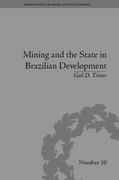Solve the following questions.
A simple NCD system has four levels of discount - 0%, 20%, 40% and 60%. A new policyholder starts on 0% discount. At the end of each policy year, policyholders will change levels according to the following rules: At the end of a claim free year, a policyholder moves up one level, or remains on the maximum discount. At the end of a year in which exactly one claim was made, a policyholder drops back one level, or remains at 0%. At the end of a year in which more than one claim was made, a policyholder drops back to zero discount. For a particular policyholder in any year, the probability of a claim free year is fo, the probability of exactly one claim is y, and the probability of more than one claim is X10 (i Write down the transition matrix for this time homogeneous Markov chain. [2] (ii) Calculate the 2-step transition probabilities from state i to state j , p,". [3] (iii) If the policyholder starts with no discount, calculate the probability that this policyholder is at the maximum discount level 5 years later. [5] (iv) If a large number of people having the same claim probabilities take out policies at the same time, calculate the proportion would you expect to be in each discount category in the long run. [5] [Total 15]A simple NCD system has four levels of discount - 0%, 20%, 40% and 60%. A new policyholder starts on 0% discount. At the end of each policy year, policyholders will change levels according to the following rules: At the end of a claim free year, a policyholder moves up one level, or remains on the maximum discount. At the end of a year in which exactly one claim was made, a policyholder drops back one level, or remains at 0%. At the end of a year in which more than one claim was made, a policyholder drops back to zero discount. For a particular policyholder in any year, the probability of a claim free year is fo, the probability of exactly one claim is y, and the probability of more than one claim is X10 (i Write down the transition matrix for this time homogeneous Markov chain. [2] (ii) Calculate the 2-step transition probabilities from state i to state j , p,". [3] (iii) If the policyholder starts with no discount, calculate the probability that this policyholder is at the maximum discount level 5 years later. [5] (iv) If a large number of people having the same claim probabilities take out policies at the same time, calculate the proportion would you expect to be in each discount category in the long run. [5] [Total 15](i) Derive, from first principles, the moment generating function of a Gamma(a, 1) distribution. [3] (ii) Use this moment generating function to show that the mean and variance are a/ A and a/ 12 , respectively. [2] [Total 5]








